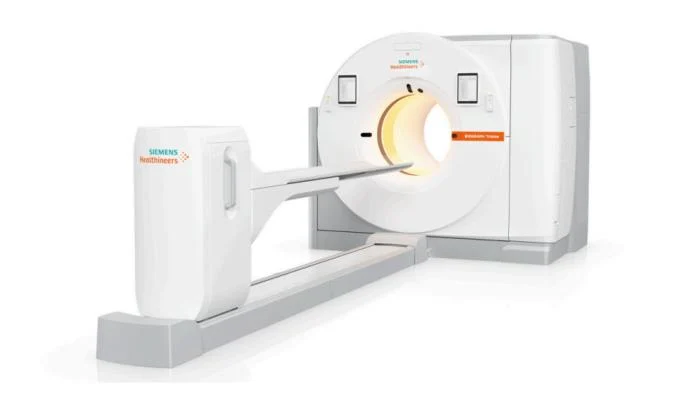What’s New in PET/CT
Early response monitoring of neoadjuvant chemotherapy using [18F]FDG PET can predict the clinical outcome of extremity osteosarcoma.
PET/CT Updates, Research & Education
July 2021
Purpose
To propose a personalized therapeutic approach in osteosarcoma treatment, we assessed whether sequential [18F]FDG PET/CT (PET/CT) could predict the outcome of patients with osteosarcoma of the extremities after one cycle and two cycles of neoadjuvant chemotherapy.
Methods
A total of 73 patients with AJCC stage II extremity osteosarcoma treated with 2 cycles of neoadjuvant chemotherapy, surgery, and adjuvant chemotherapy were retrospectively analyzed in this study. All patients underwent PET/CT before (PET0), after 1 cycle (PET1), and after the completion of neoadjuvant chemotherapy (PET2), respectively. Maximum standardized uptake value (SUVmax) (corrected for body weight) and the % changes of SUVmax were calculated, and histological responses were evaluated after surgery. Receiver-operating characteristic (ROC) curve analyses and the Cox proportional hazards models were used to analyze whether imaging and clinicopathologic parameters could predict event-free survival (EFS).
Results
A total of 36 patients (49.3%) exhibited a poor histologic response and 17 patients (23.3%) showed events (metastasis in 15 and local recurrence in 2). SUVmax on PET2 (SUV2), the percentage change of SUVmax between PET0 and PET1 (Δ%SUV01), and between PET0 and PET2 (Δ%SUV02) most accurately predicted events using the ROC curve analysis. SUV2 (relative risk, 8.86; 95% CI, 2.25–34.93), Δ%SUV01 (relative risk, 5.97; 95% CI, 1.47–24.25), and Δ%SUV02 (relative risk, 6.00; 95% CI, 1.16–30.91) were independent predicting factors for EFS with multivariate analysis. Patients with SUV2 over 5.9 or Δ%SUV01 over − 39.8% or Δ%SUV02 over − 54.1% showed worse EFS rates than others (p < 0.05).
Conclusion
PET evaluation after 1 cycle of presurgical chemotherapy can predict the clinical outcome of extremity osteosarcoma. [18F] FDG PET, which shows a potential role in the early evaluation of the modification of timing of local control, can be a useful modality for early response monitoring of neoadjuvant chemotherapy.
Source: Lee, I., Byun, B., Lim, I. et al. Early response monitoring of neoadjuvant chemotherapy using [18F]FDG PET can predict the clinical outcome of extremity osteosarcoma.
EJNMMI Res 10, 1 (2020). https://doi.org/10.1186/s13550-019-0588-4
<https://ejnmmires.springeropen.com/articles/10.1186/s13550-019-0588-4>
Retrieved 21 July 2021.

Sarcoma and Bone Cancer Awareness Month
- The 5-year relative survival rate for all stages of osteosarcoma combined (localized, regional, distant) is 60%.
- Several factors that can help a person’s prognosis include:
- Being younger (child or teen, as opposed to adult)
- Being female
- Tumor being located on an extremity bone
- Tumor being completely resectable
- Normal blood alkaline phosphatase and LDH levels
- The tumor responding well to chemotherapy
Connect with Us
Get additional information and stay up-to-date with the latest news by connecting with us on social media.



